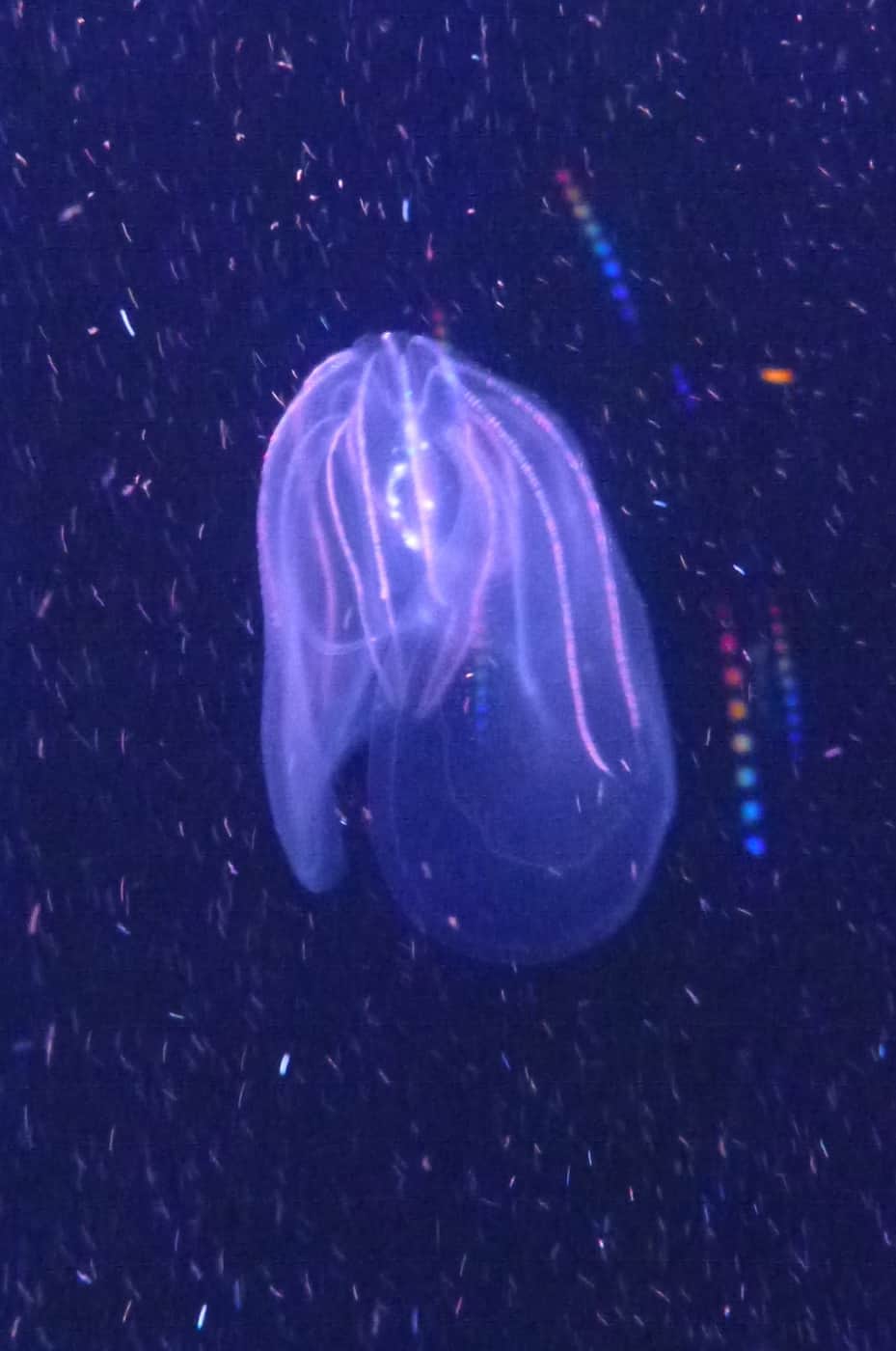
Comb jellies are one of my favorite aquatic critters. Comb jellies (sea gooseberries, sea walnuts, or Venus’s girdles) are formally known as ctenophores. Ctenophores have 8 rows of ctenes, or “combs” that cause the shimmering rainbow appearance along the sides of the jelly. These are beat together in unison to propel the comb jelly through the water. Click here to watch them swim! They do not have the stinging cells (nematocysts) like other jellyfish, and instead capture prey using sticky tentacles or enlarged feeding lobes. Comb jellies are carnivorous and feed on tiny plankton. There are even some species of comb jelly that like to snack on other smaller comb jellies! Many of these critters are bioluminencent, meaning they give off light when disturbed. When food is abundant, these critters can quickly multiply into a jellyfish bloom. I remember when I went diving once in Jamestown, RI, we were swimming through comb jelly soup. I even got one stuck in my snorkel! On a side note: comb jellies do not taste great. Kind of like a saltwater flavored slime ball.
